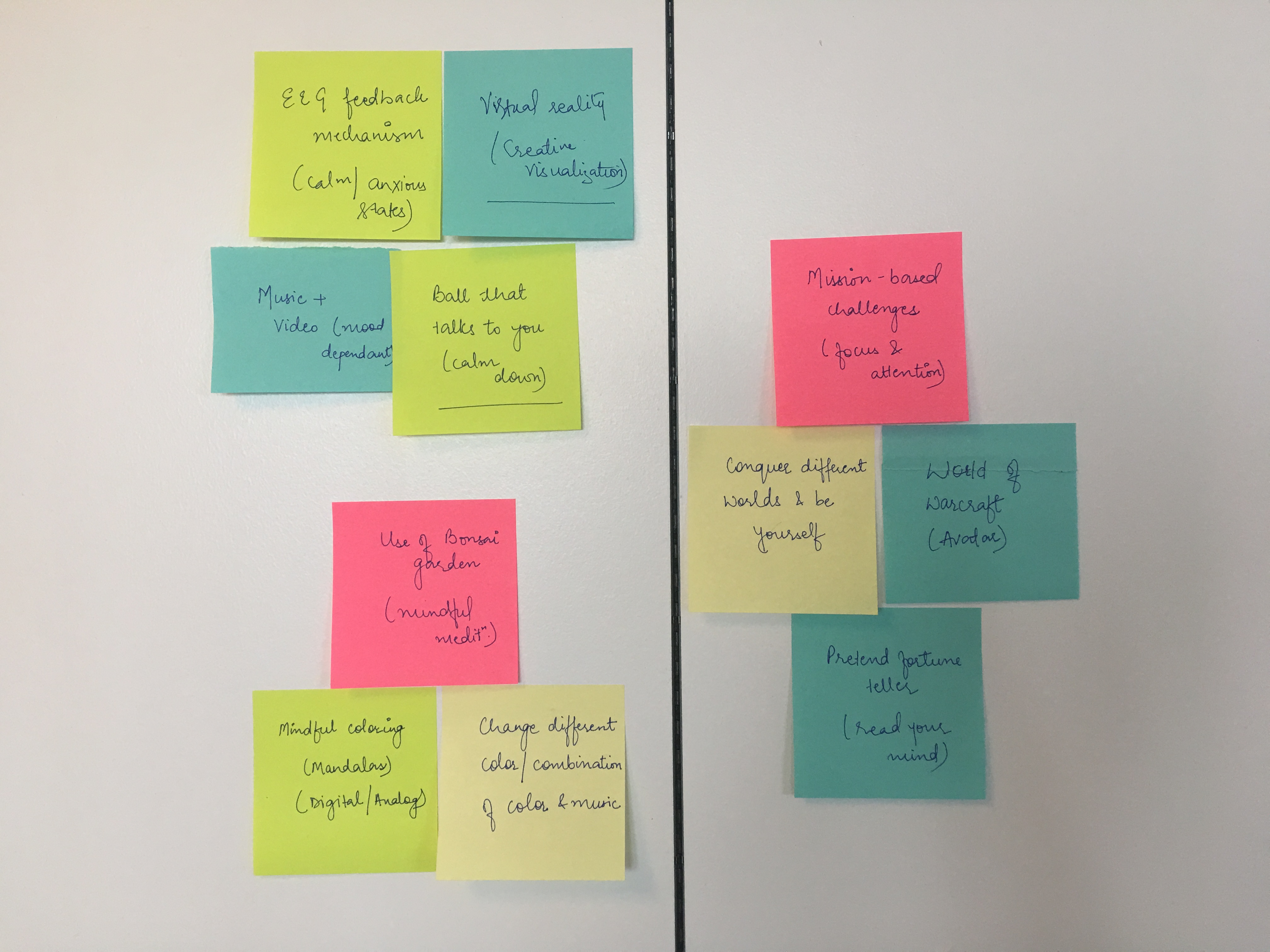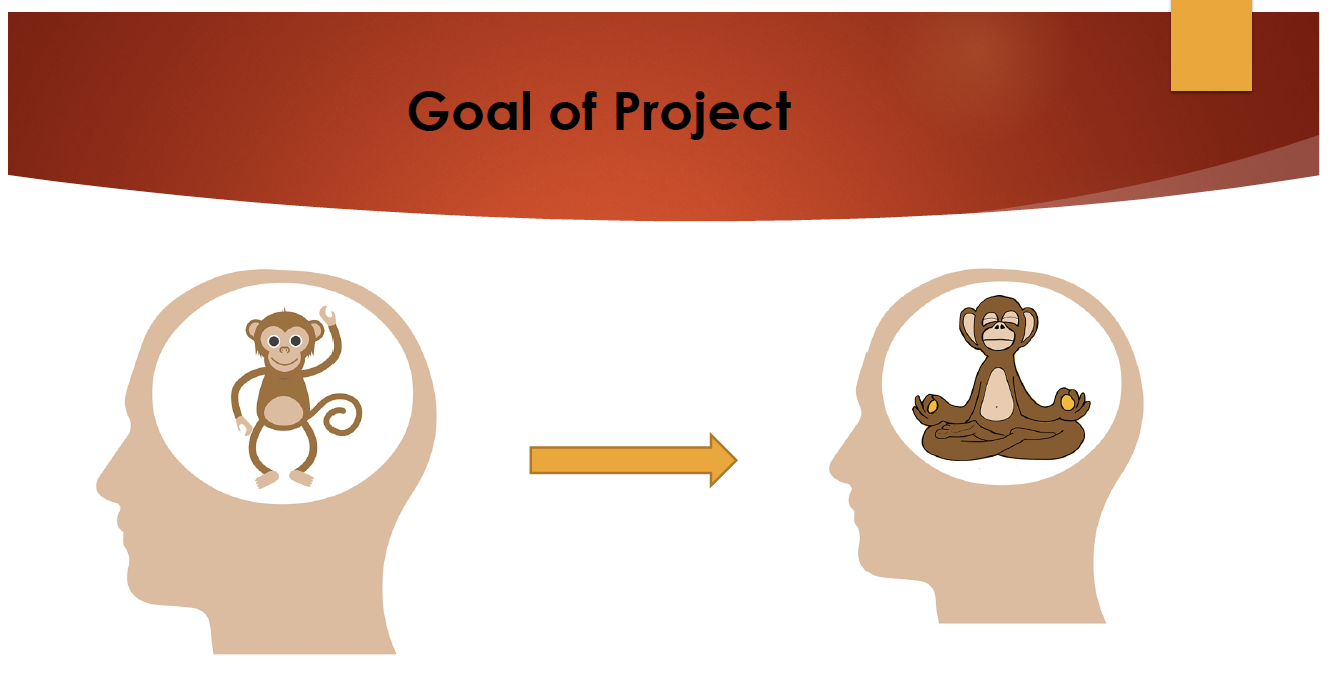Monkey-Mind
A creative, action-oriented, web and mobile-based platform designed to educate children about mental health using interactive multimedia technology resources and digital games
Role
Product Designer
Tasks
Product Conceptualization; Strategy; UX Design & Research;
Market Research; Wireframing; Storyboarding; Prototyping; Game Design
Format
Web- & Mobile- based platform
Tools
Scratch; Wix; Canva; Sketch;
Paper Prototyping; Adobe Photoshop; Adobe Illustrator
Supervised by: Maaike Bouwmeester & Christopher Hoadley
According to the report by the Center for Disease Control and Prevention in May 2013, 1 in 5 children suffer from a mental disorder in a given year across the United States. This implies that approximately 17 million young people meet the criteria for mental disorders which impedes their abilities to learn, behave, and express their emotions.


Usually, first signs of mental illnesses are shown by a person before the age of 14 years and unfortunately, only less than 20% of children and adolescents receive timely interventions (Kessler et al., 2007).
The 2015 Children’s Mental Health Report by the Child Mind Institute also suggested that giving children access to mental-health resources early in their education plays a critical role in mitigating negative consequences later in life.
The current school educational system places a lot of emphasis on awareness about physical health and hygiene but not as much on mental health and resilience. The future generation has to be raised in a way that makes them more cognizant of their mental health and the role it plays in leading a healthy, balanced life. This responsibility lies in the hands of many stakeholders such as schools, teachers, parents, and counselors.
There are different ways and resources that could be used to encourage children to work towards
their mental fitness. For example, deep breathing, relaxation exercises, mindfulness meditation,
and yoga are some of the commonly used practices by people to train their minds to become strong and resilient in the face of adversities. They are highly beneficial and can have a lasting positive impact on the overall well-being (Cherkin, Sherman & Balderson, 2016; Woodyard, 2011).
As a School Psychologist & Behavioral Trainer, I used these methods very frequently with children of different age groups with an aim that having learned all these skills, they will be able to better understand themselves at an emotional and psychological level. But I observed that most of the time, children (especially, in the age range of 5-12 years) find it difficult to establish a connection with these practices because they find them ‘less engaging’ or ‘boring’.


Anxiety is one of the most commonly occurring mental health issues among children (Verhulst,
1997). The 2015 Children’s Mental Health Report by the Child Mind Institute revealed that approximately 31.9% of children have been diagnosed with anxiety-related issues. According to the National Institute of Health, around 25% of young children frequently experience symptoms of anxiety but if they have developed strategies and skills to cope with such situations, then they are most likely able to successfully handle them effectively.
Researches in the field of child development have shown that the learning experiences encountered in the earliest years (age of 5 to 12 years) have a significant impact on shaping their young brains (Huttenlocher & Dabholkar, 1997).
The CBT approach has been found to be one of the most widely used interventions
for anxiety-related issues (Butler, et.al., 2006; Smits & Hofmann, 2008). Research has consistently shown that creative, play-based activities, presented within the context of an empathically attuned therapeutic relationship, engage children and enhance the effectiveness of CBT (Knell & Dasari, 2011; Lowenstein, 2016; Podell et al., 2009; Shelby & Berk, 2009).



The Crumpled Paper Throw game (Lowenstein, 2016) is an active and engaging game focused on psychoeducation of anxiety, its associated physiological responses, and the process of CBT. This helps to maintain children’s interest and helps them to absorb the material. But apart from information, it doesn’t give an opportunity to learn skills and strategies effectively handle anxiety-provoking situations.

Calm and Breathe+ is a mobile-based app which focuses on guided meditation and deep breathing


Breathe, Think, Do with Sesame (Sesame Street) is a kids-based breathing app which helps the child to visualize the inhalation and exhalation process during a relaxation session

But presently, there aren’t any resources that are designed in a way that a child can consume and understand such a complex and nuanced area of mental health such as anxiety. Thus, the biggest challenge here is to create a comprehensive resource that is engaging enough for the kids themselves. Along with it being a knowledge storehouse, it should also have a plethora of various resources and tools to work towards mental fitness.
As the main focus was on creating a fun yet meaningful ‘learning’ experience, it was crucial to have facilitators who can ensure that the process of learning takes place effectively. Going through multiple cycles of iterations with sketches & low-fi wireframes , I realized that there has to be a streamlined framework that can standardize the whole learning experience as well as provide guidelines to facilitators to ensure the goals and objectives are achieved appropriately.
Therefore, the resulting solution is a website that serves as a resource hub for various toolkits consisting of interactive tools and digital games that can be played on a touchscreen-based smartphone or tablet. Moreover, it also has an additional component – the guided reflection process in order to ensure effective learning and transfer of skills to real-life experiences takes place.
Apart from these primary goals, it also serves a secondary goal, that is to make mental health education resources more accessible which is pertinent to counselors who can use this as complimentary to their therapy plans or parents seeking child-friendly tools for the same.

The goal of this design solution is to teach children how to calm the monkey in their minds.

Every toolkit follows a three-tier process approach designed to be facilitated by a parent, teacher or counselor: Learn about the topic, Play the game and Reflect on learning.
The treatment approaches for different types of anxiety-related issues varies depending on its sources, causes, and severity of impairment. It requires an expert with specialized training to design an individual-specific treatment plan. Therefore, at the moment, the project is not focused on creating or implementing a treatment plan for severe anxiety disorders.
The main premise and the underlying foundation of this design project is two-fold: i. to create a platform for educating every child about different aspects of mental health; and ii. to learn and practice skills for coping with challenging and stressful situations in a fun and interactive manner. However, the therapists and counselors can use this platform at their discretion as a complimentary resource with their individualized treatment plans for children with severe anxiety problems. The links to views the prototype for this project is as follows:
Website for Monkey-Mind
Game: Feed-the-Fish





